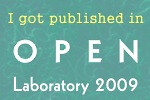I wrote this piece a few months ago at the invitation of The New Atlantis. It was supposed to be one of a collection of responses to a polemical essay that they published last year on the parlous state of modern science by Dan Sarewitz. But the publication was delayed so, I have decided to go ahead and publish now.
Update (30 Nov 2017): My response has now been published, alongside those of several other other correspondents and a reply from Sarewitz. These help to amplify and clarify some of the key points of the debate and make for very interesting reading, even if we have all yet to reach an agreed conclusion.
In an essay published in The New Atlantis last year under the provocative title ‘Saving Science‘, Dan Sarewitz pulled no punches. He took exception to the post-war settlement based on Vannevar Bush’s 1945 claim that “Scientific progress on a broad front results from the free play of free intellects, […] in the manner dictated by their curiosity for the exploration of the unknown.” To Sarewitz, who is Professor of Science and Society at Arizona State University, the “great lie” of the power of curiosity-led inquiry has corrupted the scientific enterprise by separating it from the technological problems that have been responsible since the Industrial Revolution for guiding science “in its most productive directions and providing continual tests of its validity, progress, and value.” “Technology keeps science honest,” is Sarewitz’s claim. Without it, science has run too great a risk of being “infected with bias,” and now finds itself in a state of “chaos” where “the boundary between objective truth and subjective belief appears, gradually and terrifyingly, to be dissolving.”
Those are bruising words. Sarewitz has some important points to make about the interaction of science with the outside world (a theme he returned to in a more recent Guardian article), but the fevered rhetoric of ‘Saving Science seemed to me to dull his analytical edge.
Sarewitz is right to draw attention to the complex interplay between science and technology; and to the energising effects on science of the demands of governments, industry, and commerce to make solve problems. These interactions are under-appreciated in some scientific quarters. He raises valid questions about the publish-or-perish culture within academic research that yields too work that is uncited work or of questionable reliability. And his criticism of the tendency in biomedical research sometimes to fixate on animal models at the expense of progress in clinical research hits some valid targets.
In the end, however, Sarewitz overplays his hand. Technology has certainly been a powerful driving force in scientific productivity. Yes, it can keep science honest because there is no better test than a product, a process or a medical treatment that just works. But in Sarewitz’s telling, curiosity-driven research has produced just two fundamental advances of transformational power in the last century: quantum mechanics and genomics. To do so, he has to overlook a plethora of blues skies breakthroughs, such as the theory of evolution, antibiotics, plate tectonics, nuclear fission and fusion, the X-ray methods that cracked the structures of DNA and proteins, and monoclonal antibodies, that have been profoundly influential culturally and economically. At the same time, he underplays the stringency of the reality check that experiment and observation place on the free play of free intellects. It seems to me that both roads make for interesting journeys, even if can often be difficult to decide which is truly the more rewarding.
Sarewitz has every right to question how far scientists should be permitted to roam free from the demands of the societies that fund them But I can’t accept his prognosis science must be directed because, apart from a couple of particular examples that both involve management by the military, he doesn’t say how.
The oversight of science is quite properly a preoccupation of governments – as major funders – even if it raises perennially contentious issues of freedom and responsibility for the research community. But Sarewitz’s prescription of management by technology to keep science honest is too simplistic, for reasons that emerge – unconsciously? – in his discussion of ‘trans-science’. To Sarewitz, trans-science is research into questions about systems that are too complex for science to answer – things like the brain, a species, a classroom, the economy, or the climate. But missing from this list is science itself, and the social, political, and industrial ecosystems in which it operates. Unarguably, these are issues and phenomena of huge complexity and importance.
So, how are we to figure out how best to make science work? This remains an important question for all of society. Polemic may be great for stirring debate, but the answer lies in the closely argued detail. I suggest we proceed on all sides by respecting the evidence, acknowledging our limitations, and renewing our determination to improve the connections between science and the world beyond laboratory walls.





